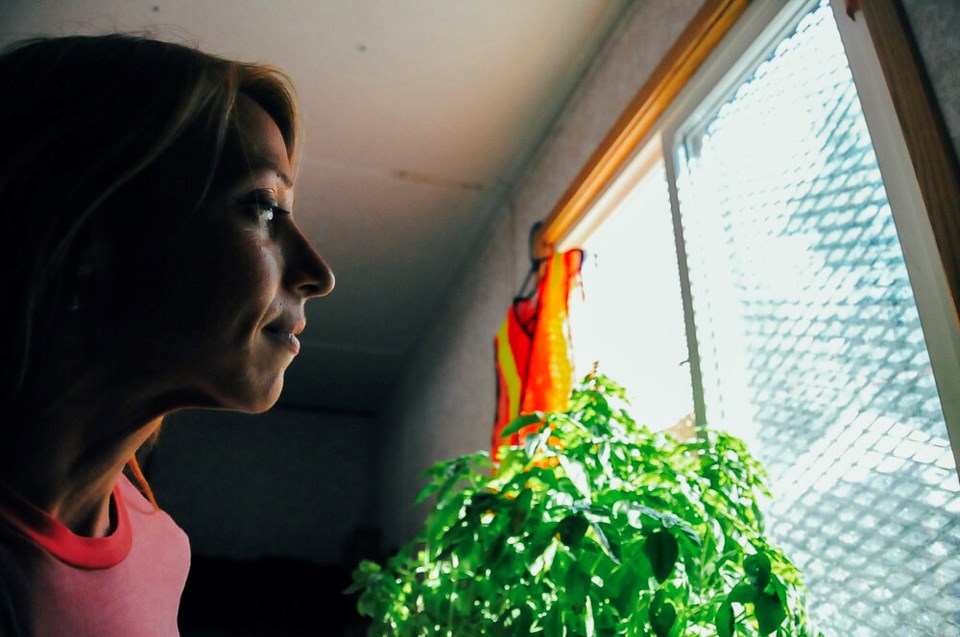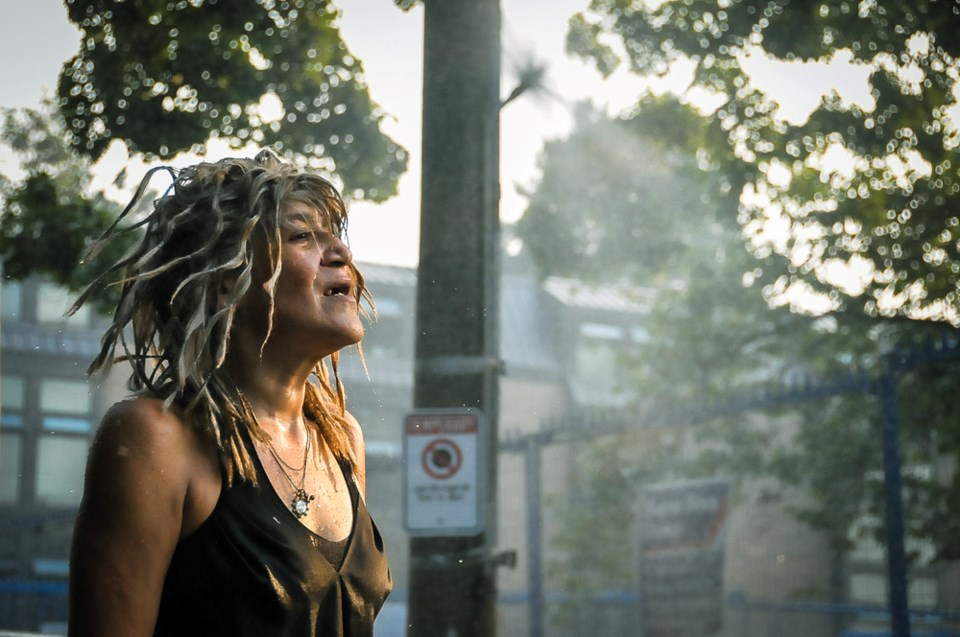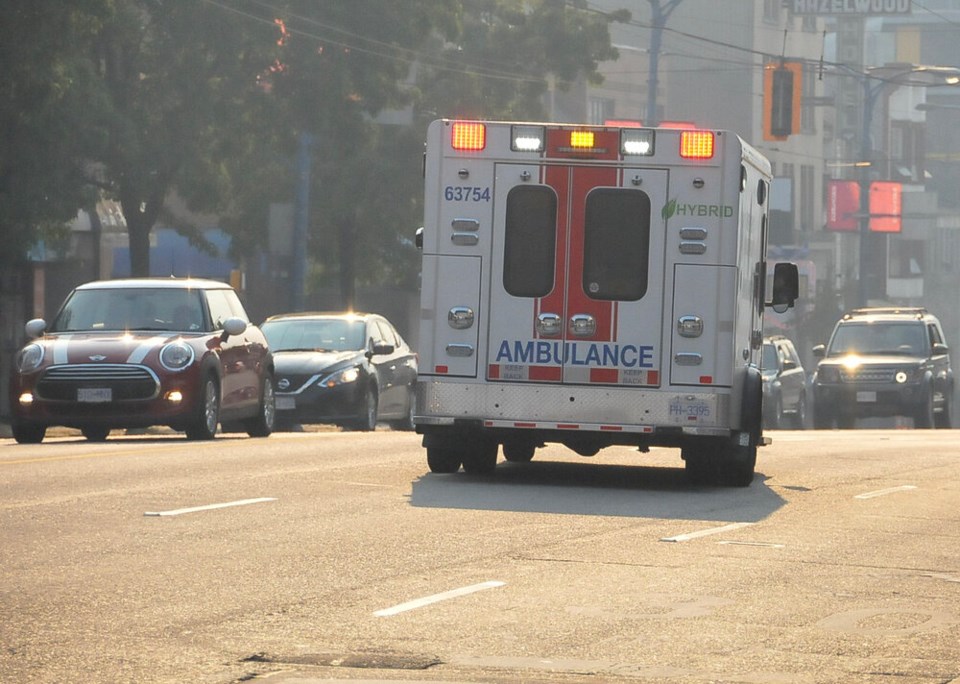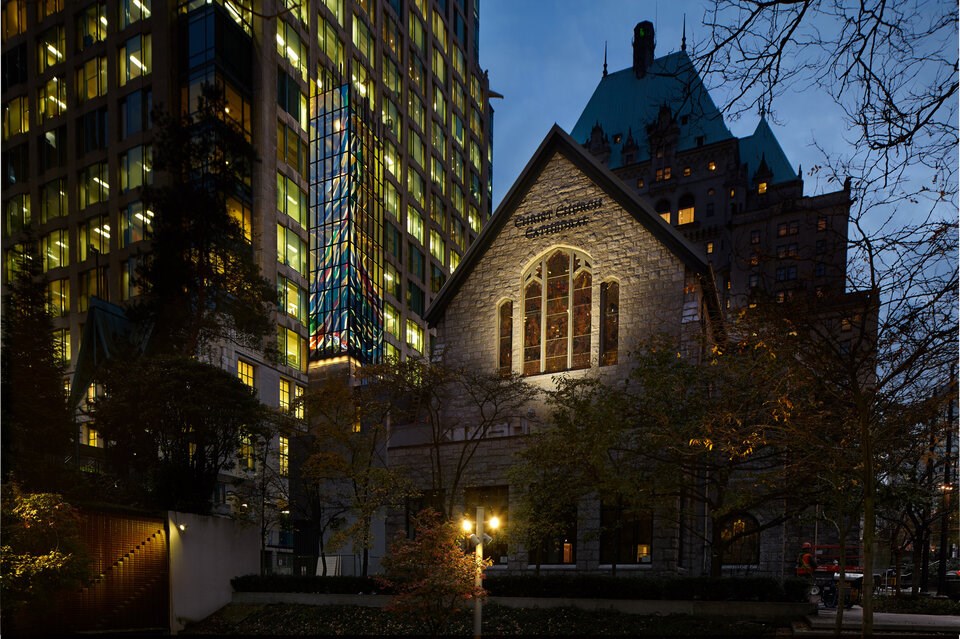On July 28, 1894, the corner-stone was laid at Christ Church Cathedral in what today has become downtown Vancouver’s oldest standing building. For 130 years, the cathedral has welcomed everyone — from Anglican parishioners to hungry pensioners at its free Maundy Café.
This summer, the church is opening up its air-conditioned halls to another increasingly vulnerable group — anyone suffering during the most powerful of future heat waves. In a first-of-its-kind agreement signed this month with the City of Vancouver, the church will become the latest non-city building to welcome anyone seeking shelter from extreme heat.
The move comes four years after an unprecedented heat dome killed at least 619 people in British Columbia in what stands as Canada’s most deadly environmental disaster on record.
“Unfortunately, it seems to be happening more and more,” said Rev. Christopher Pappas. “We feel our responsibility especially extends to the most vulnerable. That would include the poor, the sick, the elderly, and also, you know, pregnant women and children as well.”
Located off Burrard Street, the church sits between two SkyTrain stations, and Pappas said he hopes its location will also make it accessible to anyone on foot.
Cooling centres still remain under-used
Not all cooling centres are so readily accessible. This week, researchers from the University of British Columbia’s Centre for Climate Justice warned in a report that many of the province’s most vulnerable people are still slipping through the cracks of public health.
An estimated 98 per cent of those who died in the 2021 heat wave perished at home. UBC assistant Prof. Liv Yoon, who led the study, said based on their research, many cooling centres across B.C. remain under-used.
In interviews with members of the public, she said the problem they identified was being able to get there and whether they wanted to spend time in cooling centres at all.
“So – perhaps then the question of interest becomes – are these cooling centres/spaces meeting users’ needs?” said Liv in an email. “The answer for this question would be ‘no’ – which partially explains the underutilization.”

​One interviewee cited in the report said the closest cooling centre is 25 minutes away from her home. With three children, she said couldn’t afford the bus there and back. Others expressed concern that cooling centres wouldn’t accommodate them because they have a mental illness.
“Because out of all the mental illnesses, I think schizophrenia, paranoid schizophrenia, is one with the highest stigma likelihood than anybody else,” one member of the public told the researchers. “That’s why I’m living in hiding.”
Studies after the 2021 heat wave found people living with were among the most likely to have died. They accounted for 15.7 per cent of heat-related deaths in a group that only represents one per cent of B.C.’s population, the Centre for Climate Justice report said.
Beyond cooling centres, report calls on province to guarantee 'right to cool'
Mohammed Rafi Arefin, an assistant professor in UBC’s Department of Geography and a researcher at the centre, said their research shows “piecemeal interventions” from cities and the province have failed to ensure another extreme heat event won’t lead to another wave of deaths.
The study found many government interventions — from free air conditioners to updates targeting new builds under municipal and provincial building codes — were useful but left many people behind in a patchwork of targeted policies.
The researchers interviewed a range of people about their access to government programs designed to dampen the health effects of extreme heat. Conversations centred on BC Hydro’s free air conditioner program and how tenants faced obstacles when landlords would move to renovate a home with an AC unit, heat pump or new windows, and in the process, get kicked out in a so-called “climate renoviction,” said Arafin.
“We are skirting the kind of big picture thinking,” he said. “Our proposal is that we need a rights-based approach that's collective, that's enforceable, so it doesn't get lost in these technical or targeted interventions.”

The report recommends the B.C. government take a mandatory rights-based approach so people are ensured a “right to cool.” The policy would ensure mechanical or passive cooling would be extended to all residents of the province as a basic requirement of habitability and adequate housing.
Arefin and his colleagues do not specify whether upholding such a right should be paid for by government, through enforceable requirements on landlords, or some combination of both.
Right-based approach to cooling requires more funding, oversight, say researchers
In one approach, Arefin said landlords would shoulder the costs of cooling as a basic standard of maintenance.
“Investment in housing is risky. This is part of the risk. It will eat into profits, but profitability for landlords in the past two decades in Vancouver's housing market has been astronomical,” he said.
Another way to look at it is to see government as having a duty to intervene because of the existential, large-scale nature of climate change and its threat to B.C.’s housing stock.
“The most important thing is that it's a guarantee that everybody has access to cooling,” said Arefin. “My own view is that it'll be a mix of these kind of carrot-and-stick and market incentives.”
Part of the solution might also require re-investing the B.C. Residential Tenancy Branch — which overseas the relationship between landlords and tenants trough the Residential Tenancy Act — or some other public body with oversight powers to ensure people are getting what they need.
“Without a doubt, regulations related to safety, habitability and a dignified living situation cost money,” said Arefin. “My response back to ‘the cost is too high’? 619 people. The cost is too high to just say ‘We can't afford to do anything about this.’”
Cooling centres an important stop-gap but need to overcome barriers
Arefin admitted that it will take time to achieve such a vision, and until then, collective cooling rooms — especially group settings like long-term care facilities or even apartment complexes — are an important stopgap.
For others, community cooling centres like the newly designated church in downtown Vancouver will have to play a role. But for that to happen, people first need to feel comfortable they will be welcomed and find a way to get there.
TransLink’s goal is to have its entire fleet . Arefin said that's a good step in the right direction, and one that would be even better were the transit authority to offer free transit during a heat wave.
“You can imagine: you're in your house, you're way too hot. You're on the brink of heat exhaustion. You go to your closest bus stop. You get on the bus immediately. You start to cool down,” he said.

​For Pappas, he hopes his church will do a small part to take over once people get off the bus at the other end of the line. It’s all part of his church’s religious ethos that is appears to be very much aligned with the “right to cool.”
“Our belief is that we're the stewards of creation, and we're to respect it. We're to help maintain it for everyone,” he said.
“As part of that covenant, we promise that we respect the dignity of every human being, and that includes, in my mind, certain inalienable rights — right for food, for shelter, and to not die because of heat.”
Pappas said he hopes the other more than 60 Anglican churches scattered across the Lower Mainland — as well as other houses of faith — will follow their lead.
“We can't expect to wash our hands and say ‘Oh, don't worry, the government will take care of it. We need to be willing to step forward,” he said.
Resources to prepare for and cope with extreme heat
Federal and provincial governments across Canada encourage people to prepare ahead of time for a heat wave. When temperatures rise, those who are able are encouraged to carry out on people at high risk of heat illness.
B.C. residents are encouraged to review the on how to prepare for and get through heat waves safely.
Regional information can be accessed through links in this .
Information on local cooling centres — including the — can be accessed through municipal websites.






